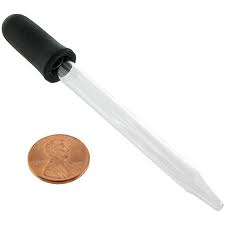
Introduction: How many drops of water can the surface of a penny hold before the water spills over the side? This trivial matter will be used to illustrate the steps in the scientific method, and to show that even little things are not so simple as they might initially seem.

The steps of the scientific method are:
Materials:
Procedures:
1) Make a prediction (just a guess since we have no data at this point) about how many drops of water will fit on the surface of a penny before it spills over.
2) Perform some "pilot experiments". Remember that your results should be repeatable. Do everything exactly the same way at least 3 times. Are they repeatable?
3) Suggest some of the factors that might be influencing the results. For example, did you always hold the dropper at the same height? Did you always use the same dropper? Did you always use the same penny? The same side?
4) Eliminate as many sources of error as you can and repeat your experiment. What do you find? Can you make your results more consistent?
You are now done collecting background information. It is time to formulate a hypothesis. A hypothesis must be testable, and it must be falsifiable. The question should be asked in such a way that your hypothesis must be either accepted or rejected. The question you will address is: "What is the factor which causes the most variability in the number of water drops that a penny can hold?"
5) Pick a factor which you feel might be the cause of some of the variability in the number of water drops a penny can hold. For example, does the side of the penny (heads vs. tails) matter?
6) Set up a null and alternate hypothesis related to the variable you selected. For example, my null hypothesis is that the side of the penny makes no difference. The alternate hypothesis is that the side of the penny does make a difference.
7) Design an experiment which tests your hypothesis. Describe it below.
It is worth considering the method you will use to analyze your data. For example, what was your sample size? (How many times did you perform the experiment. How many pennies did you use? If you used only one penny, can you generalize your result to all pennies?) Is your test one-tailed or two-tailed? If you were flipping coins and looking for a bias towards heads, for example, you would use a one-tailed test. If you were looking for a bias from 50:50, it could go either towards heads or tails, so you would use a two tailed test.
8) Conduct your experiment and collect data.
9) Present your results in a table.
10) Interpret your results. Is your alternate hypothesis accepted or rejected? Explain.
Follow-up discussion on the penny lab.